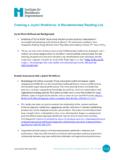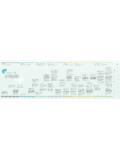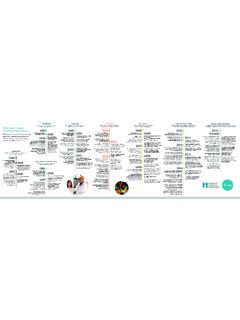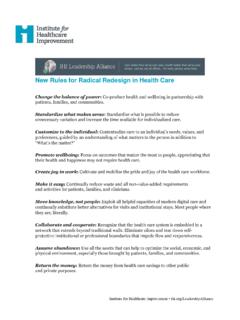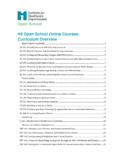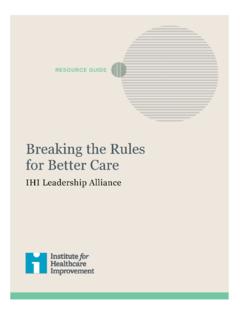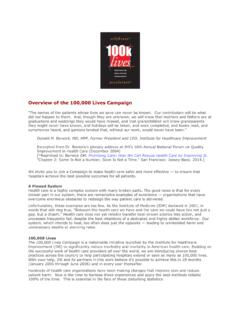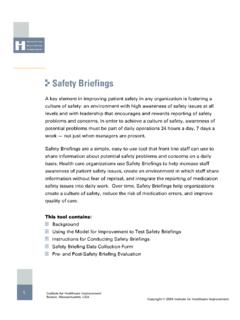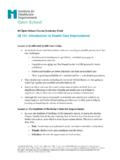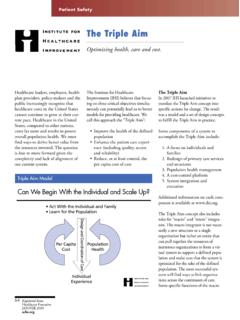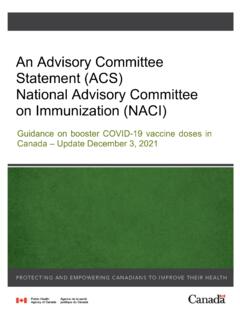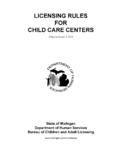Transcription of Age-Friendly Health Systems: Guide to Using the 4Ms ... - IHI
1 Age-Friendly Health Systems: Guide to Using the 4Ms in the Care of Older Adults July 2020 This content was created especially for: An initiative of The John A. Hartford Foundation and the Institute for Healthcare Improvement in partnership with the American Hospital Association and the Catholic Health Association of the United States Acknowledgments: This work was made possible by The John A. Hartford Foundation, a private, nonpartisan, national philanthropy dedicated to improving the care of older adults. For more information, visit IHI would like to thank our partners, the American Hospital Association (AHA) and the Catholic Health Association of the United States (CHA), for their leadership and support of the Age-Friendly Health Systems initiative.
2 Learn more at Thank you to the five prototype Health systems Anne Arundel Medical system , Ascension, Kaiser Permanente, Providence St. Joseph, and Trinity for stepping forward to learn what it takes to become an Age-Friendly Health system . IHI is thankful to the Age-Friendly Health Systems Faculty and Advisory Groups (see Appendix A). We extend our deepest gratitude to co-chairs Ann Hendrich, PhD, RN, and Mary Tinetti, MD; and to Nicole Brandt, PharmD, MBA, Donna Fick, PhD, RN, and Terry Fulmer, PhD, RN. We are grateful to Cayla Saret and Val Weber of IHI for their support in editing this document. The authors assume full responsibility for any errors or misrepresentations. Thank you to the core team at IHI that has worked on the Age-Friendly Heath Systems initiative Kedar Mate, Leslie Pelton, Karen Baldoza, and KellyAnne Johnson Pepin and all advisors, faculty and staff.
3 For more than 25 years, the Institute for Healthcare Improvement (IHI) has used improvement science to advance and sustain better outcomes in Health and Health systems across the world. We bring awareness of safety and quality to millions, accelerate learning and the systematic improvement of care, develop solutions to previously intractable challenges, and mobilize Health systems, communities, regions, and nations to reduce harm and deaths. We work in collaboration with the growing IHI community to spark bold, inventive ways to improve the Health of individuals and populations. We generate optimism, harvest fresh ideas, and support anyone, anywhere who wants to profoundly change Health and Health care for the better.
4 Learn more at Copyright 2020 Institute for Healthcare Improvement. All rights reserved. Individuals may photocopy these materials for educational, not-for-profit uses, provided that the contents are not altered in any way and that proper attribution is given to IHI as the source of the content. These materials may not be reproduced for commercial, for-profit use in any form or by any means, or republished under any circumstances, without the written permission of the Institute for Healthcare Improvement. Institute for Healthcare Improvement 3 Contents Age-Friendly Health Systems Overview 4 Putting the 4Ms into Practice 7 Appendix A: Age-Friendly Health Systems Advisory Groups and Faculty 19 Appendix B: Process Walk-Through: Know the 4Ms in Your Health system 20 Appendix C: 4Ms Age-Friendly Care Description Worksheet 22 Appendix D: Key Actions and Getting Started with Age-Friendly Care 29 Appendix E: Age-Friendly Care Workflow Examples 44 Appendix F: Examples of PDSA Cycles for Age-Friendly Care 48 Appendix G: Implementing Reliable 4Ms Age-Friendly Care 54 Appendix H: Measuring the Impact of 4Ms Age-Friendly Care 55 References 56 Age-Friendly Health Systems.
5 Guide to Using the 4Ms in the Care of Older Adults (July 2020) Institute for Healthcare Improvement 4 Age-Friendly Health Systems Overview The United States is aging. The number of older adults, individuals ages 65 years and older, is growing rapidly. As we age, care often becomes more complex. Health systems are frequently unprepared for this complexity, and older adults suffer a disproportionate amount of harm while in the care of the Health system . To address these challenges, in 2017, The John A. Hartford Foundation (JAHF) and the Institute for Healthcare Improvement (IHI), in partnership with the American Hospital Association (AHA) and the Catholic Health Association of the United States (CHA), set a bold vision to build a social movement so that all care with older adults is Age-Friendly care.
6 According to our definition, Age-Friendly care: Follows an essential set of evidence-based practices; Causes no harm; and Aligns with What Matters to the older adult and their family or other caregivers . Becoming an Age-Friendly Health system entails reliably providing a set of four evidence-based elements of high-quality care, known as the 4Ms, to all older adults in your system . When implemented together, the 4Ms represent a broad shift by Health systems to focus on the needs of older adults (see Figure 1). The Age-Friendly Health Systems movement now comprises several hundred hospitals, practices, and post-acute long-term care (PALTC) communities working to reliably deliver evidence-based care for older adults.
7 IHI and JAHF celebrate the participation of organizations that have committed to practicing Age-Friendly 4Ms care. Learn more about how you can join the movement and show your commitment to better care for older adults at Age-Friendly Health Systems: Guide to Using the 4Ms in the Care of Older Adults (July 2020) Institute for Healthcare Improvement 5 Figure 1. 4Ms Framework of an Age-Friendly Health system The 4Ms What Matters, Medication, Mentation, and Mobility make care of older adults, which can be complex, more manageable. The 4Ms identify the core issues that should drive all decision making in the care of older adults. They organize care and focus on the older adult s wellness and strengths rather than solely on disease.
8 The 4Ms are relevant regardless of an older adult s individual disease(s). They apply regardless of the number of functional problems an older adult may have, or that person s cultural, racial, ethnic, or religious The 4Ms are a framework, not a program, to Guide all care of older adults wherever and whenever they come into contact with your Health system s care and services. The intention is to incorporate the 4Ms into existing care, rather than layering them on top, in order to organize the efficient delivery of effective care. This integration is achieved primarily through redeploying existing Health system resources. Many Health systems have found they already provide care aligned with one or more of the 4Ms for many of their older adult patients.
9 Much of the effort, then, involves incorporating the other elements and organizing care so that all 4Ms Guide every encounter with an older adult and their family or other caregivers . Age-Friendly Health Systems: Guide to Using the 4Ms in the Care of Older Adults (July 2020) Institute for Healthcare Improvement 6 There are two key drivers of Age-Friendly care: knowing about the 4Ms for each older adult in your care ( assess ), and incorporating the 4Ms into the plan of care accordingly ( act on ) (see Figure 2). Both must be supported by documentation and communication across settings and disciplines. Figure 2. Two Key Drivers of Age-Friendly Health Systems Developed with our expert faculty and advisors (see Appendix A) and five pioneering Health systems Anne Arundel Medical Center, Ascension, Kaiser Permanente, Providence, and Trinity Health this Guide to Using the 4Ms in the Care of Older Adults is designed to help care teams test and implement a specific set of evidence-based, geriatric best practices that correspond to each of the 4Ms.
10 Though assessing and acting on the 4Ms is similar in most care settings, there are some differences. This Guide begins by outlining the 4Ms for hospital-based and ambulatory/ primary care-based settings. 4Ms Framework: Not a Program, But a Shift in Care The 4Ms Framework is not a program, but a shift in how we provide care to older adults. The 4Ms are implemented together ( , all 4Ms as a set of evidence-based elements of high-quality care for older adults). Your system probably practices at least a few of the 4Ms in some places, at some times. Engage existing champions for each of the 4Ms, build on what you already do, and spread it across your system . The 4Ms must be practiced reliably ( , for all older adults, in all settings and across settings, in every interaction).
